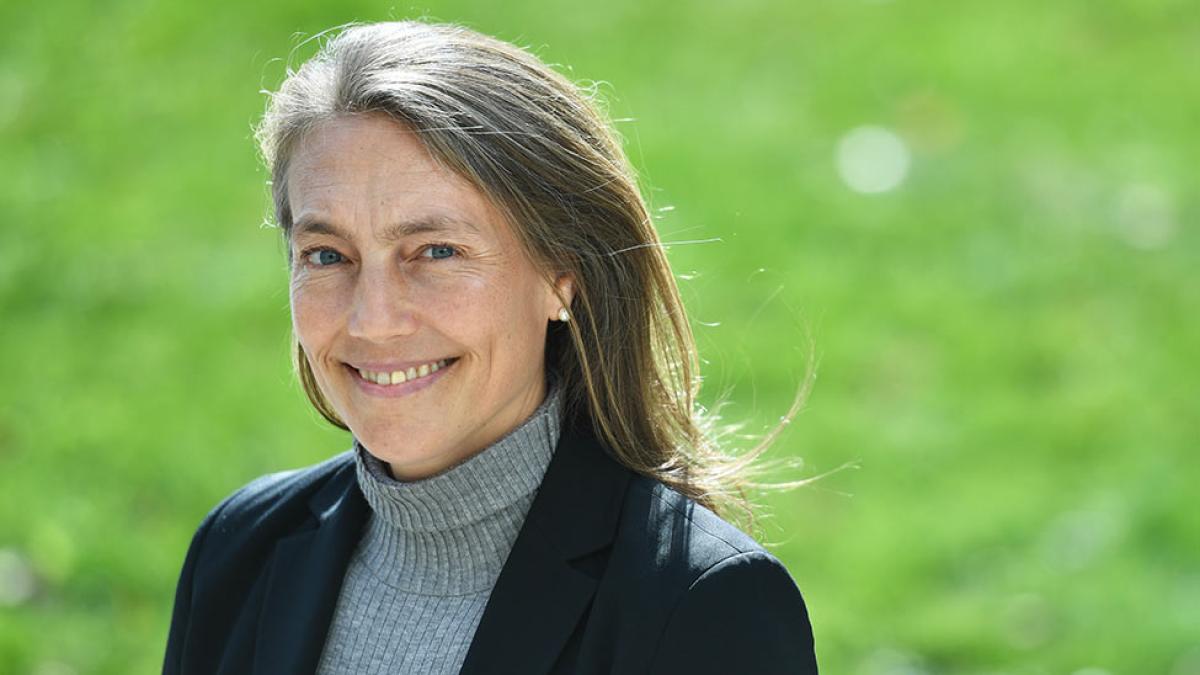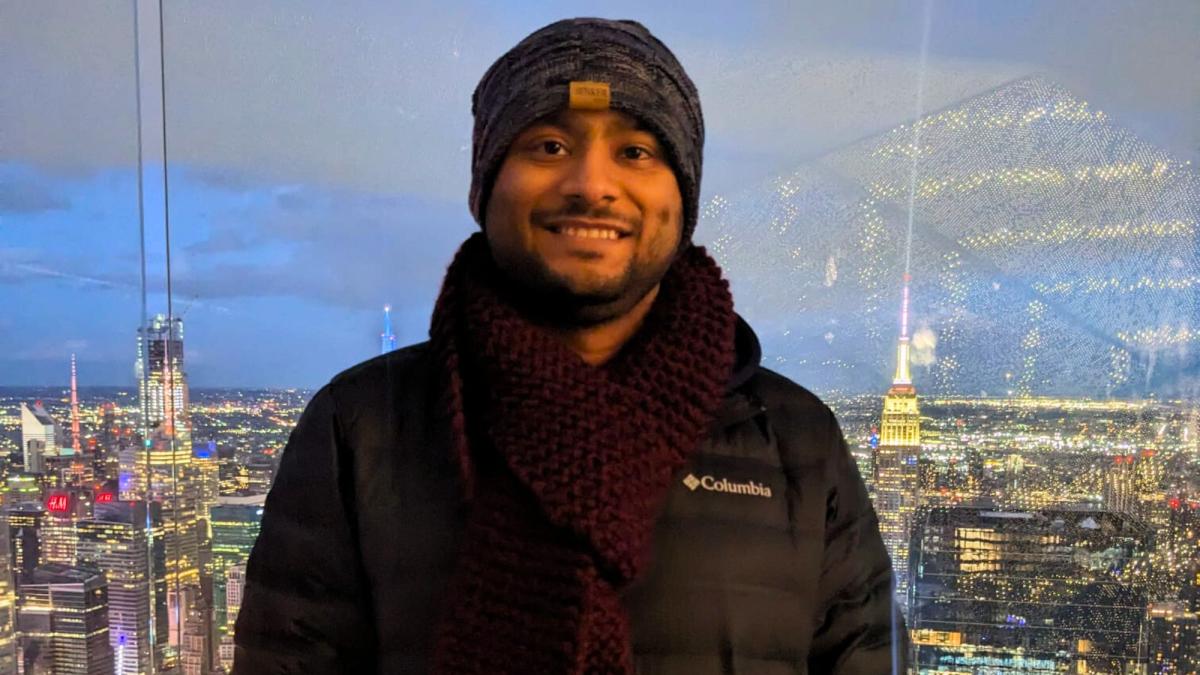
Engineering a New Path: Akshay Nair’s Quest for Professional Growth at Pace
Akshay Nair (MS in Software Development and Engineering ’25) is a Seidenberg graduate student whose dream of living in New York City led him to Pace University and the Seidenberg School of Computer Science.
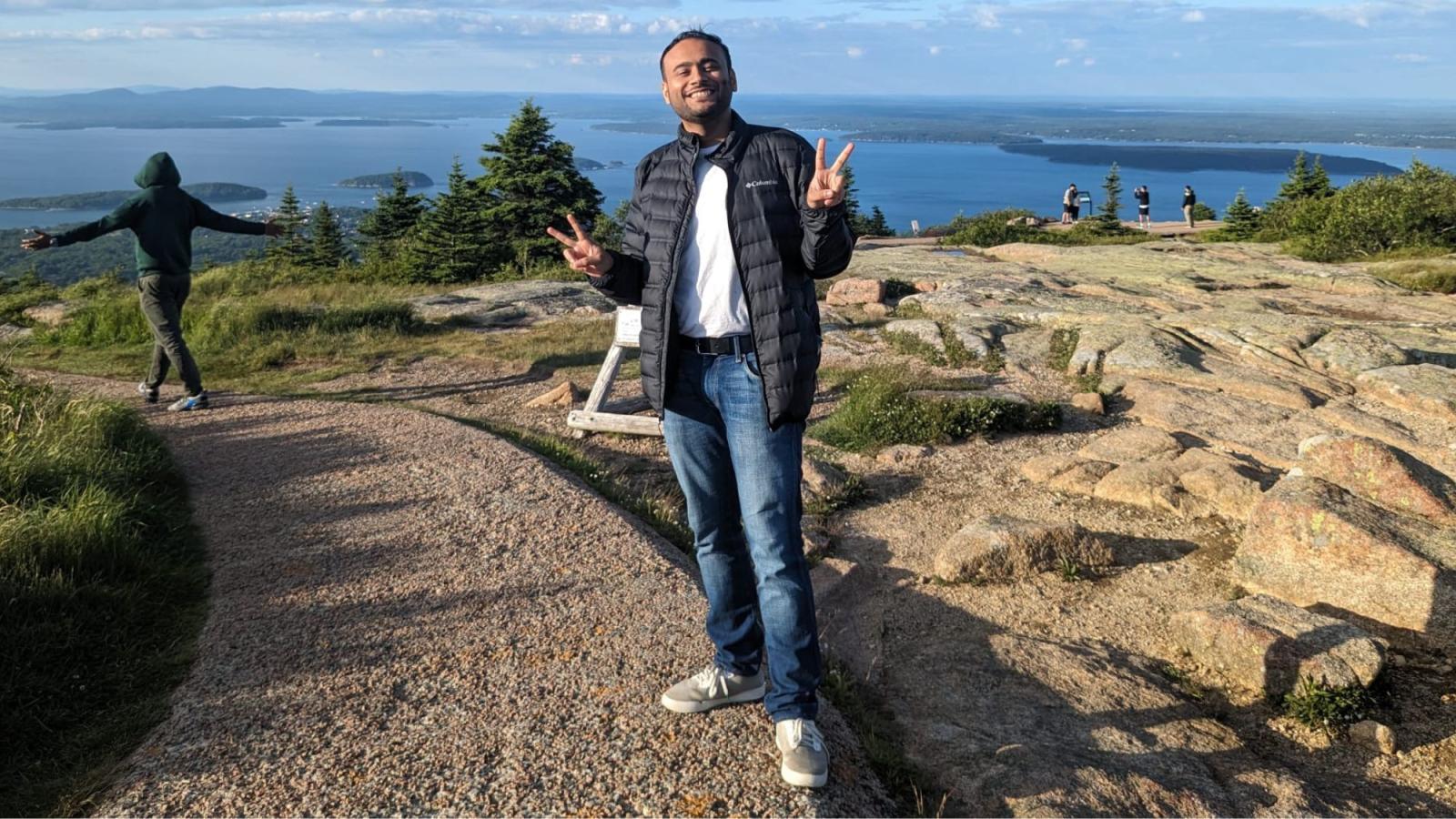
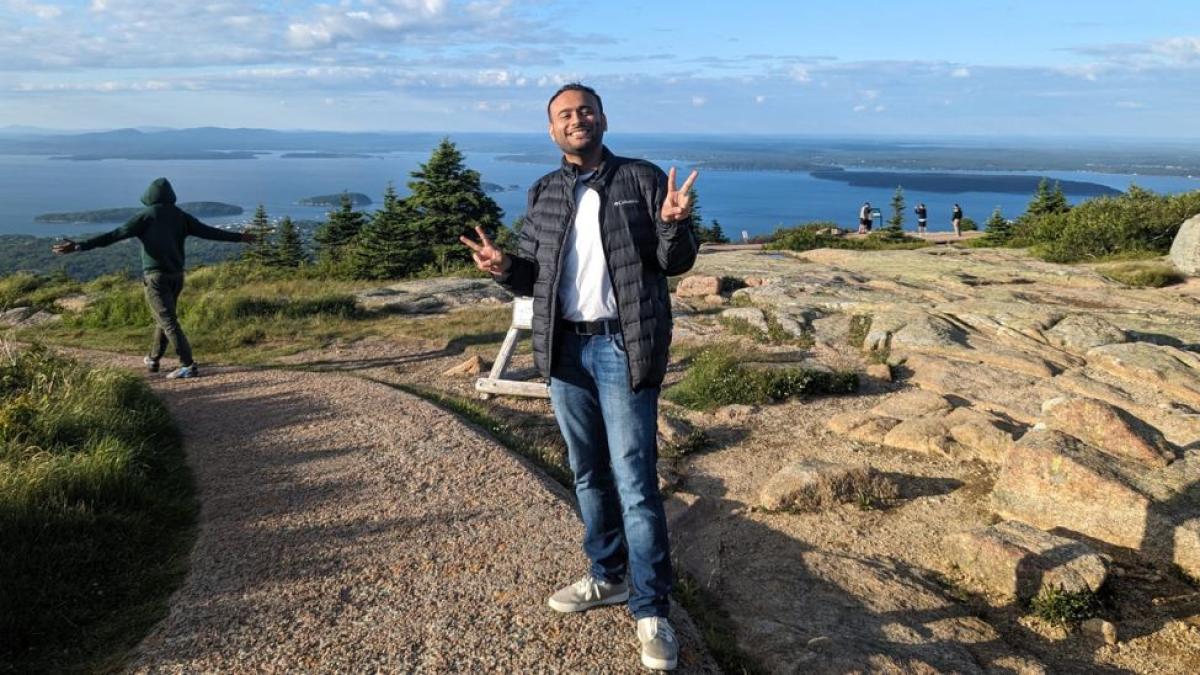
Akshay Nair (MS in Software Development and Engineering ’25) is a Seidenberg graduate student whose dream of living in New York City led him to Pace University and the Seidenberg School of Computer Science and Information Systems. As a software engineer with almost a decade of experience prior to enrolling into his grad program at Pace, Akshay was looking for a new challenge that would further his education and help him advance in his career. After he decided that Seidenberg was his next best step, Akshay has been applying his knowledge and experience to the classroom, as well as outside of it by participating in research projects and even presenting his work at international conferences. One could say he is a true Pace go-getter!
What attracted you to Seidenberg when you were applying for your master’s program and making your final decision?
I was specifically looking for a master's in software engineering, and Seidenberg’s reputation in this field was key in my decision to apply to Pace. The other major reason I applied was a deep wish to live in New York City. By the time I had applied, I had already been a software engineer for 8 years at a large multi-national bank. I was a staff software engineer contributing to their retail banking platform, and this was a project that I had contributed to from its inception. However, toward the end of the project's life, I felt that I had hit a plateau and needed to expand my knowledge to be able to step into the next level.
Now, there is a key distinction between Computer Science and Software Engineering. The former is more concerned with the nitty-gritty of computing and its theoretical foundations, while the latter is focuses on using computing concepts to manage practical software solutions. This ability to formally plan, design, implement, and manage software was a key missing element from my skillset. I saw the writing on the wall about the future of programming when large language models (LLMs) became publicly available: just knowing enough about programming wasn't going to be enough anymore, and unlike some other tech trends I had seen, this felt different. No bootcamp or online course would be enough for this, so I concluded that it was time for me to go back to school. And I suspect it won't be the last time either.
Another large part of my decision to come to Pace is New York City itself. I had already visited the city twice when I applied, and I wanted to experience the city long term. In fact, I had only applied to colleges with software engineering programs or tech MBA's that were accessible by the train network surrounding NYC.
I wanted to be able to attend as many events as possible, and with New York being one of the largest tech hubs in the world, especially in fintech, I saw no other alternative than to come here.
Can you briefly describe a Seidenberg class or project that was particularly impactful for you? What made it stand out?
The class that I enjoyed the most was Enterprise App Development taught by professor Dhruvil Gandhi. It was my first foray into generative AI-based applications, and I got to build a quiz application that leverages Google's Gemini and GCP (Google Cloud Platform). It was also how I learned that you didn't need to develop LLMs to be part of the AI techscape. I learned that knowing how to leverage them into products is also a viable path.
Another project I really enjoyed was focused around researching social media from a software application perspective. For this research, I wanted to understand how to develop social applications in a decentralized pattern, similar to how email systems developed and grew in the early days of the internet. I developed a paper on this topic it during the Winter of 2023 under the guidance of Dr. Sotirios Skevoulis, and then presented it at an international conference in the Summer of 2024. I then applied this research into my capstone project and presented the findings at Seidenberg's Annual Research Day at the end of the Fall 2024 semester. I was aided in the capstone efforts by my classmates, Kadeem Miller, Parimal Borkar, and Ansley Rodriguez.
The reason why this project stood out to me and why I enjoyed it so much was because it was less based on coding and more focused on learning how to build social applications. There are plenty of examples of coding a social media app out there on the web, but there isn't a lot of publicly accessible work on showcasing everything you would need to turn it into a viable product that could then be used by end-users. And this is exactly the kind of value I was hoping to get from my education here.

How have your experiences outside the classroom enhanced your education at Pace?
Considering I wanted to be in the world’s fintech hub, I have been going to as many events as possible! I regularly attend tech meetups for accessibility, web performance, generative AI applications, as well as more company-specific meetups for Wix, Google, and Meta. Pace Career Services have been great in helping me find a lot of these opportunities.
I’ve also been utilizing my knowledge from the classroom and research projects by applying it to additional career opportunities. In the summer, I received an internship at Speakhire under Pace's Community Impact program, which gave me the chance to apply the lessons from my studies into an active project.
That internship turned into a part-time position where I've helped overhaul the company’s tech processes and rapidly helped the team digitize their business processes.
If you could name three things that stand out most about Seidenberg for you, what would they be?
For one, I have really enjoyed my classes so far. They are hands-on and have led me to explore real-world applications of the technology we were learning about. Another thing that stands out about Seidenberg for me is the opportunity to fully delve into a research topic and really understand it. I’ve had great support from faculty and peers, and had a great time presenting my projects. Finally, the facilities at Pace are great. Other than the research labs, Seidenberg is also really close to the library, where I’ve spent a considerable amount of time when preparing for exams or doing my work.
Pioneering Research in Action: Highlights from Seidenberg Annual Research Day 2024
The Seidenberg School of Computer Science and Information Systems finished the Fall 2024 semester in celebratory fashion, and one of the highlight events was the Seidenberg Annual Research Day.
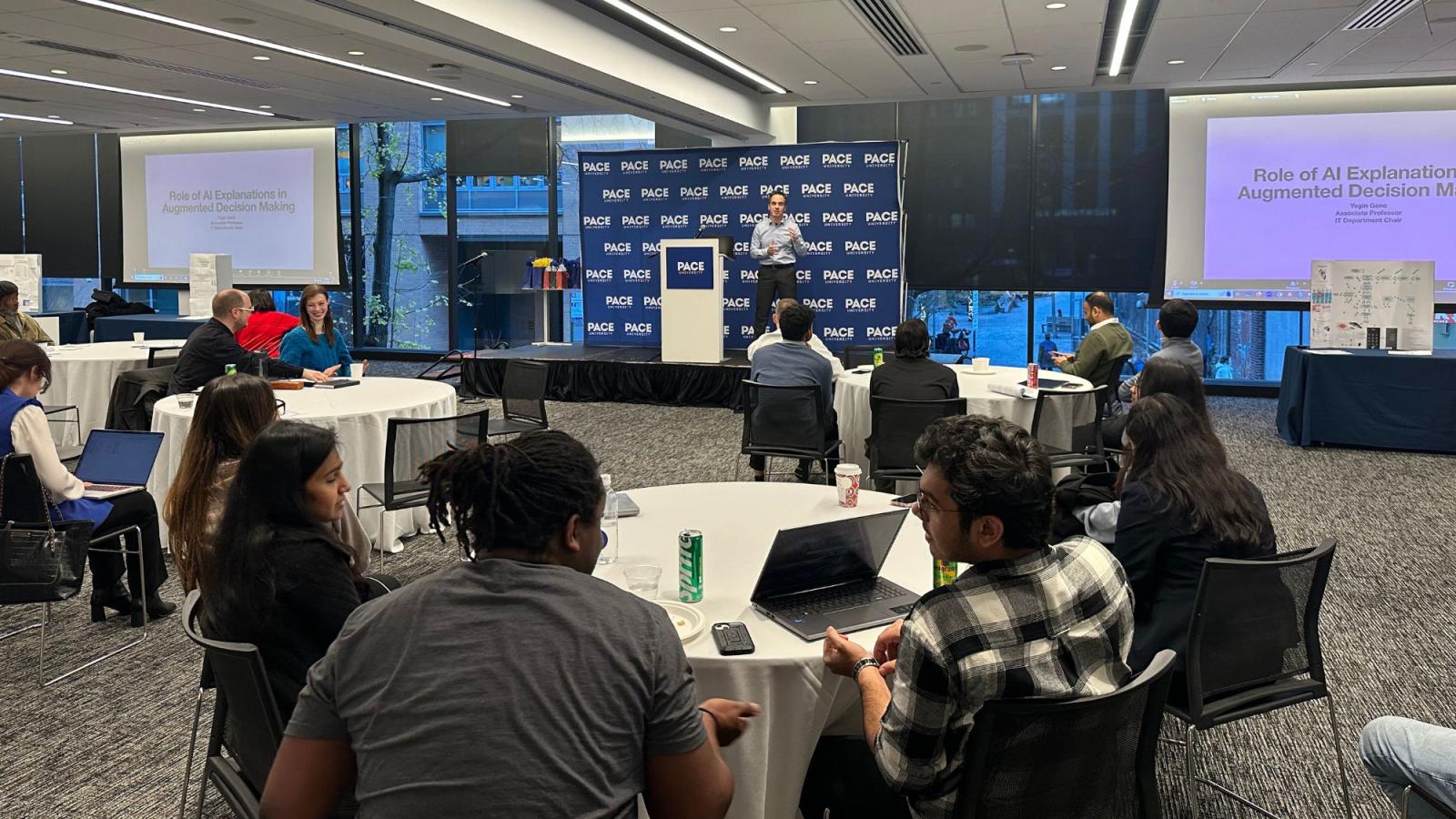
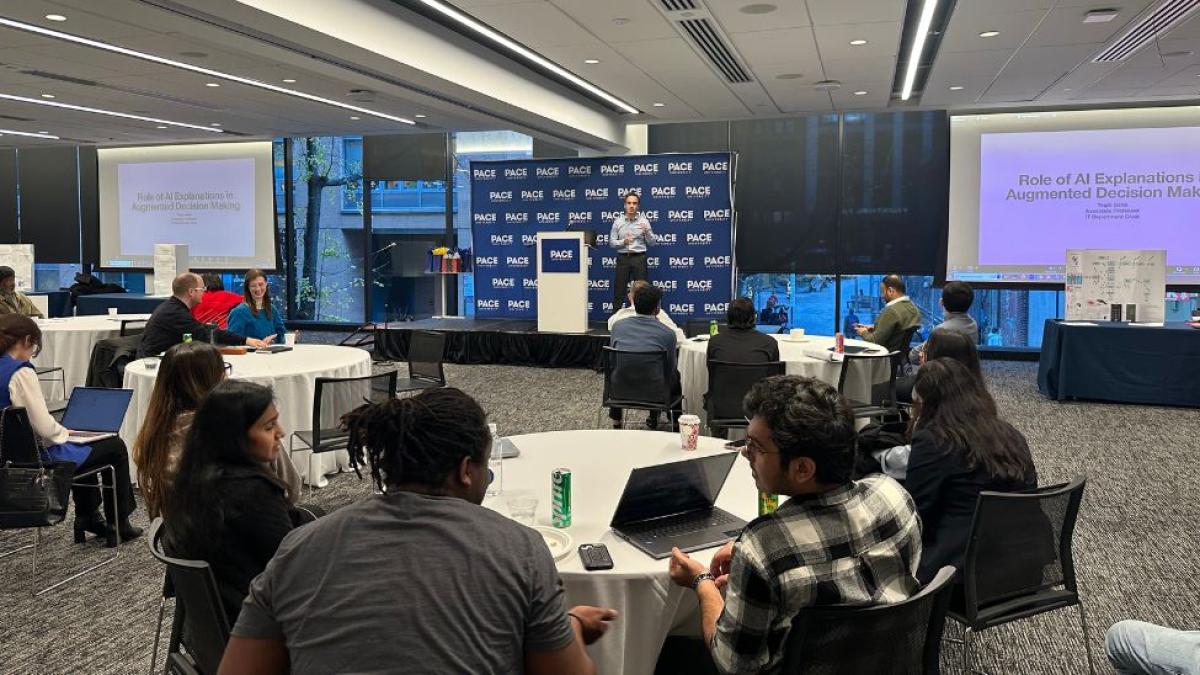
The Seidenberg School of Computer Science and Information Systems finished the Fall 2024 semester in celebratory fashion, and one of the highlight events was the Seidenberg Annual Research Day. This distinguished conference showcases both groundbreaking research and outstanding student papers, all while fostering an environment that encourages active participation from faculty and students. The primary aim of the Seidenberg Annual Research Day is to facilitate a platform for learning and sharing recent advancements in Computer Science, Data Science, and Information Technologies. The conference, led by Seidenberg professor Sung-Hyuk Cha welcomes a diverse array of participants, including seasoned researchers and aspiring students, creating an inclusive space for academic exchange.
The 2024 event began with opening words from Seidenberg’s Dean Li-Chiou Chen and Pace University’s Provost Jonathan Hill. Following their introductions, students set up posters with visual presentations of their research, which they then presented to faculty and attendees while also participating in rapid oral presentations and answering questions about their work. The diverse range of topics of the students’ work spanned across a wide array of industries, including healthcare, cybersecurity, artificial intelligence, finance, education, virtual reality, and technology driven social platforms.
Following the students’ presentations, the event featured three faculty speakers from Seidenberg. Assistant Professor Dr. Soheyla Amirian’s talk, Fair and Responsible AI in Medical Imaging Informatics, highlighted challenges and solutions for ensuring fairness and responsibility in AI-powered medical imaging informatics. Focusing on widely accessible and cost-effective imaging modalities such as plain radiographs (X-rays), her presentation explored computational strategies to first detect and then mitigate biases and enhance AI algorithm impartiality. Her work underscores the importance of responsible AI practices to ensure that medical imaging technologies are safe, equitable, and beneficial for all.
Following the first presentation, Dr. Jonathan Williams, Clinical Assistant Professor of Human-Centered Design at Seidenberg, continued with his talk on Designerly Knotting in Beginning Design Education. His talk explored how knot tying, when positioned within the design domain, serves as a constructionist learning tool. This research examined two instructional cases: one in which academically gifted high school students engaged with designerly knotting in a summer residential program, and another in which adult learners utilized it as part of career training. The findings demonstrated that designerly knotting can stand alone, or stand alongside, other beginning design activities and exercises that teach beginning design.
Wrapping up the trio of speakers was Dr. Yegin Genc, the Chairperson of the Information Technology Department at Pace. His presentation on the Role of AI Explanations in Augmented Decision Making investigated how AI-generated explanations influence human judgment in decision-making processes. Recent studies have revealed that when AI provides recommendations, decision-makers engage in two key metacognitive processes: system-monitoring, where they assess the validity of AI suggestions, and self-monitoring, where they evaluate their own knowledge and beliefs. His work examined the effects of AI explanations, those typically used to evaluate the correctness of AI recommendations, on augmented decision making from the perspective of these cognitive mechanisms.
After all of the presentations were concluded, the 2024 conference was closed with awards and closing remarks. The entire Seidenberg team wants to congratulate the students and faculty who participated in the event and highlighted the incredible level of excellence that is driving the entire school forward. In the words of Provost Hill, “these abstracts represent original research and though-provoking problems pertinent to Computer Science and Information Systems. We commend all contributors for their dedication and innovation and thank them for enriching this conference with their work.”
If you want to learn more about the students’ presented research projects, you can find them all listed on the event’s website link below.
Turning Passion Into Innovation: Stephanie Sicilian’s Path to Seidenberg and AI
Stephanie Sicilian is a student leader pursuing her Master’s in Information Systems with a concentration in Data Science at Pace’s New York City campus, and constantly setting standards both in the classroom and in all the research projects she is involved in.
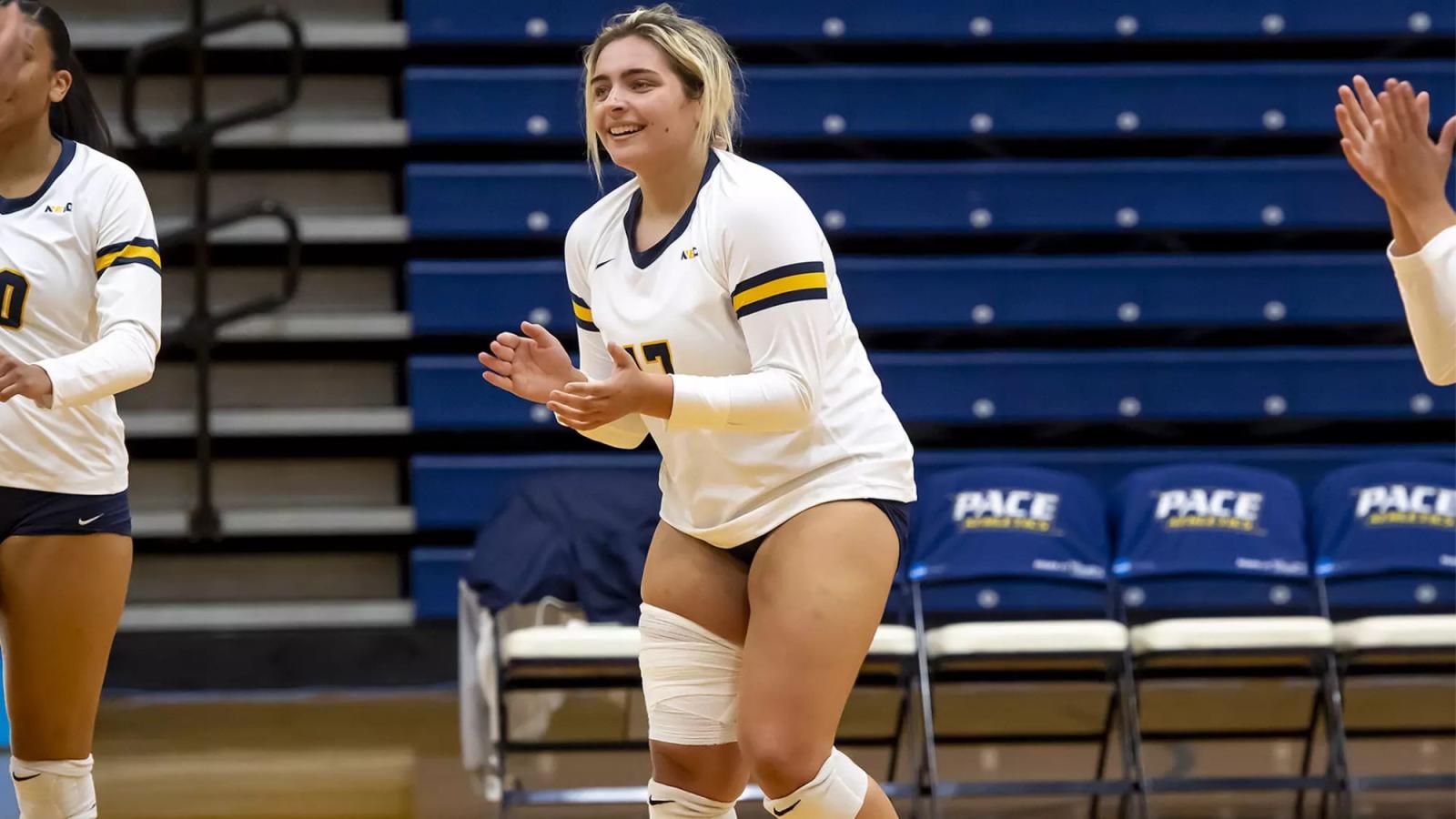
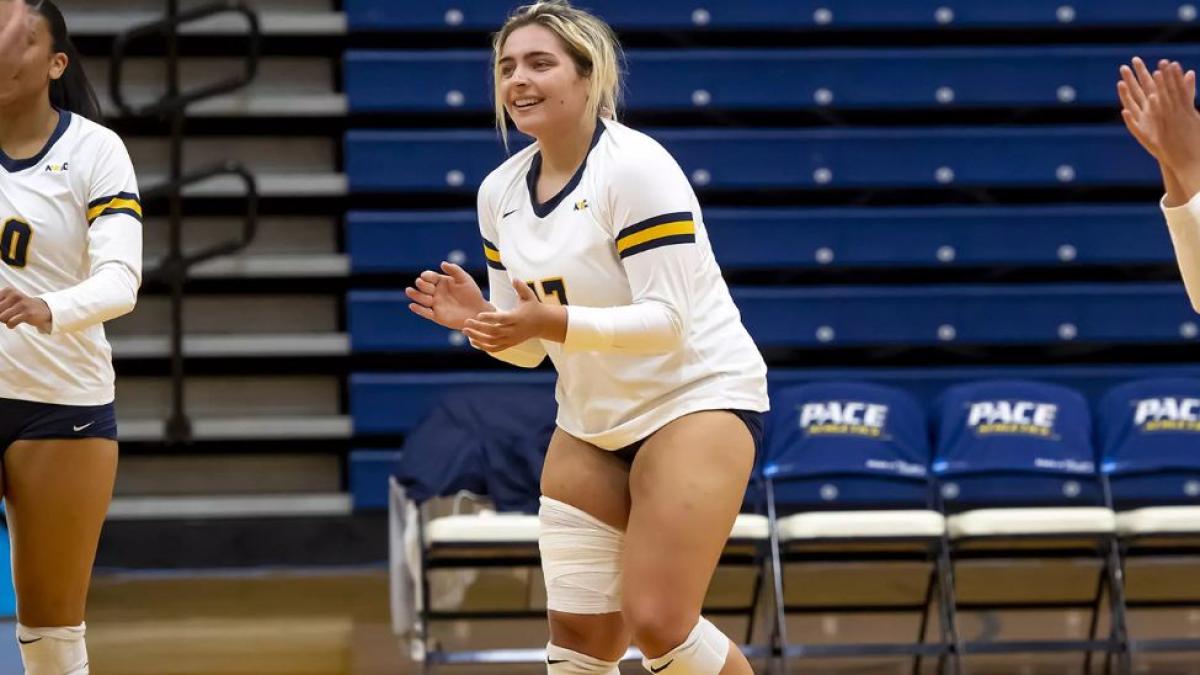
Stephanie Sicilian (MS in Information Systems ’26), began her Pace journey as an undergraduate Biology major and a student-athlete on the women’s volleyball team on Pace’s Pleasantville campus. Being a curious and driven person both on and off the court, after Stephanie found her passion for technology, she transferred into the Seidenberg School of Computer Science and Information Systems and graduated with a BA in Computer Science, along with a minor in Business. Today, she is a student leader pursuing her Master’s in Information Systems with a concentration in Data Science at Pace’s New York City campus, and constantly setting standards both in the classroom and in all the research projects she is involved in—as you are about to find out from this interview with her.
At Seidenberg, Stephanie was able to finally find the opportunities that her passion for technology always wanted to explore, but was never able to in her high school surroundings.
Seidenberg’s accredited programs, cutting-edge facilities, and hands-on learning opportunities gave me the foundation I needed to succeed.
While she had a general interest in tech and computer science when she enrolled into Seidenberg, Stephanie continued to say that “the rapid growth of artificial intelligence across industries inspired me to deepen my understanding of this groundbreaking field. This is why I chose to stay at Seidenberg for my master’s degree—because of the incredible support I’ve received from faculty and peers across both campuses.”
In the first semester of her master’s program, the Information Systems Principles course set the stage for some of Stephanie’s most impactful experiences. In that class, she had an opportunity to write a conference paper and develop a full-stack working prototype. Under the guidance of Dr. Youngsoo Shin, she worked with her peers Himanish Nellutla and Dundi Vyshnavi Durga Majji as the team leader to successfully develop an AI-powered stock investment risk calculator, designed to help novice investors make more informed financial decisions. For Stephanie, one of the most important lessons she learned “was the importance of delivering a quality user experience.” The team’s research heavily focused on understanding the needs of end users, so they conducted voluntary surveys with Pace students to collect critical feedback that shaped the tool’s accessibility and usability.
This project, combining research, technical development, and leadership while solving real-world problems in a user-focused way, only reinforced Stephanie’s passion for tech. “The experience taught me how to balance technical work with leadership responsibilities, but also deepened my appreciation for user-centered design. Writing the conference paper taught me how to present technical ideas for an academic audience, while leading the team allowed me to develop project management and teamwork skills.”
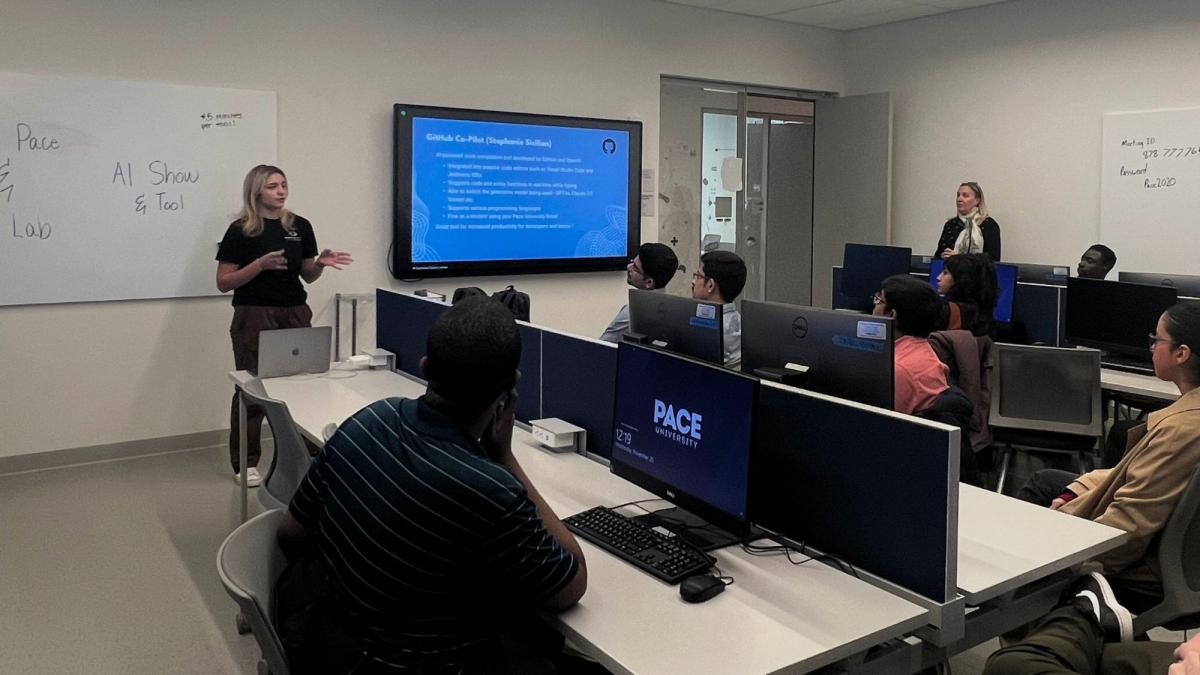
But, Stephanie’s passion for innovation extends far beyond the classroom. As a graduate assistant to Dr. Christelle Scharff, she has been instrumental in the development of the new Pace AI Lab. In this role, she has worked on building machine learning models, training convolutional neural networks (CNNs), and developing Generative Adversarial Networks (GANs). Her technical contributions have helped shape the lab into a resource for students eager to explore artificial intelligence.
Beyond technical contributions, Stephanie has continued to take on leadership. She has expanded the lab’s presence on campus by hosting events and collaborating with other student organizations to create joint workshops. For example, Stephanie mentioned that “as the Communications Lead for the Google Developer Group on campus, I took the initiative to reach out to certified Google Developer Experts and invited them to speak at our club events. One of the highlights of this role was bringing in tech prodigy Tanmay Bakshi, an AI software architect at IBM, to share his expertise with our community.” Another great opportunity was attending the NYC Google Developer Fest 2024, where she engaged closely with event panelists and got to discuss the importance of inclusivity in emerging technologies.
Stephanie also shared that a standout event for her was hosting the AI Show and Tool workshop in collaboration with the AI Lab, where she and her fellow club members presented AI-driven academic tools to help students enhance their learning. “What made this event truly special was the overwhelming turnout of students who came not only to learn, but to present their own tools as well. The room was fully engaged, with lively discussions and an incredible exchange of ideas that showcased the impact of AI on academic and personal productivity.”
The collaborative environment, access to advanced tools, and opportunities for innovation make Seidenberg the ideal place to prepare for a future in AI and technology.
If all this hunger for innovation wasn’t impressive enough, Stephanie has also stayed connected to her athletic background by returning to her high school as a volunteer coach for the girls’ volleyball team. “As a former captain who led the program to its first state championship title, it was incredibly fulfilling to give back to the team and program that shaped my foundation in teamwork and leadership. Coaching allowed me to mentor and help young athletes in my community grow in the sport. It also provided a meaningful balance to my academic and technical work, serving as a reminder of the importance of discipline, teamwork, and resilience—qualities that have been essential in both my athletic and professional pursuits.”
To wrap up our conversation, we asked Stephanie to name three things that she believes would describe the Seidenberg school. She said that, “First, the supportive community at Seidenberg truly stands out. I was immediately welcomed by faculty, staff, and peers who were eager to help me succeed. This sense of belonging made the transition from another major seamless and inspired me to fully embrace the opportunities available within the field and deepen my passion for learning.”
Secondly, Stephanie pointed out Seidenberg’s emphasis on hands-on learning. Putting in succinctly, Stephanie went on to mention that “from developing machine learning models in the AI Lab to building full-stack prototypes in class, I’ve gained practical experience that bridges the gap between theory and application. Seidenberg’s computing resources, including access to high-performance computing systems and state-of-the-art labs, have been crucial in supporting my technical projects and research endeavors.”
And finally, Stephanie pointed out that “Seidenberg provides incredible opportunities for growth and innovation The school fosters an environment where students can explore cutting-edge technology, network with industry professionals, and showcase their creativity.”
Week in Insights: Spain’s Property Play Is a Blunt Tax Instrument
Lubin Professor Phil Cohen writes in Bloomberg Law about Spain proposing a 100% tax on properties purchased by non-European Union residents to resolve a housing crunch— he says streamlining business income tax laws would ease compliance and help with IRS enforcement.

Power & Politics: The battle over birthright citizenship
Professor Gershman was featured on News 12’s Power & Politics to discuss the controversy surrounding the executive order to deny birthright citizenship, providing historical context on this decades-old constitutional provision.
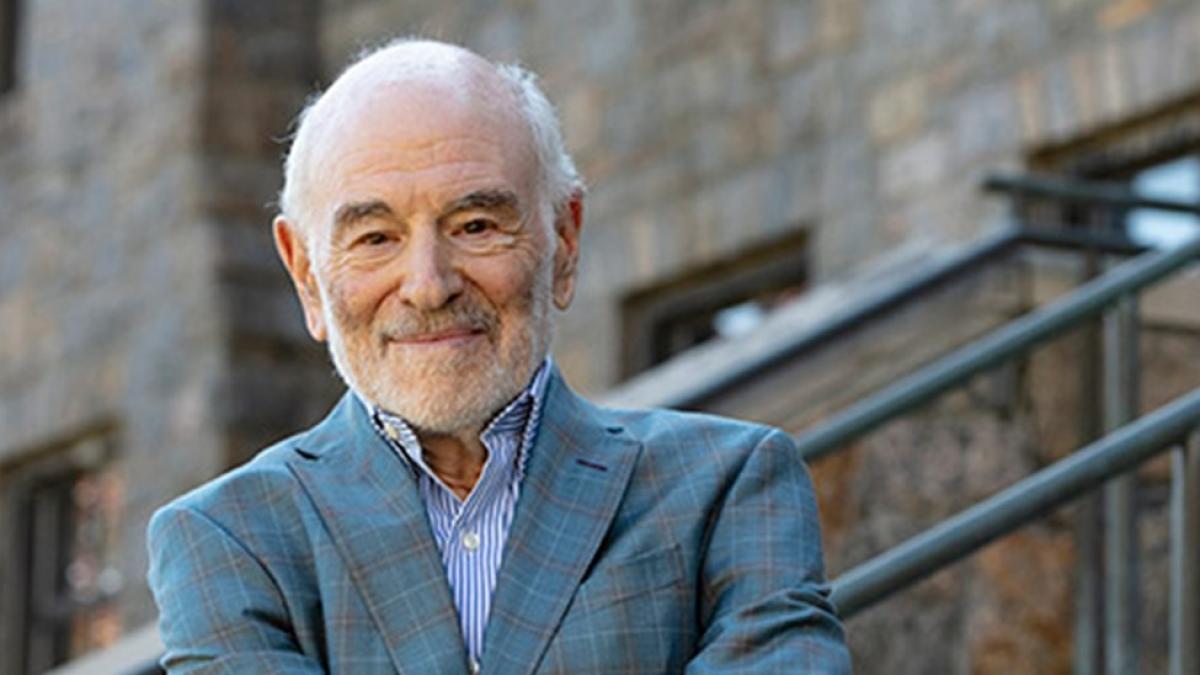
Administrations Change, Our Mission Endures.
Associate Director and Director of Training of the Counseling Center Richard Khan, facilitated a three-day mental health and well-being workshop in Guyana as part of the Safeguarding the Human Dignity and Rights of Populations At-Risk (SPAR) Project, funded by Global Affairs Canada (GAC). The training brought together over 70 teachers, guidance counselors, welfare officers, and school administrators from across Guyana.
Pace University Center For Student Enterprise Recognized By National SRBA
Pace’s Center for Student Enterprise (CSE) was recently honored by the National Student-Run Business Association (SRBA) for its success in student-led business operations. The CSE employs 80 Lubin students across five student-run businesses, fostering hands-on entrepreneurial experience. Professor Kathy Winsted was highlighted for her leadership in this initiative, Shiksha reports.

Susan Cacace Sworn In As Westchester County District Attorney
Alumna Susan Cacace ’89 was sworn in as Westchester County’s District Attorney at a formal inauguration ceremony held at the Elisabeth Haub School of Law yesterday. Following remarks from Pace University President Marvin Krislov, Haub Law Dean Horace Anderson, and several state and county leaders, New York Attorney General Leticia James administered the oath to DA Cacace.
DA Cacace is the first Haub Law alum to be elected Westchester County District Attorney and the third to be elected to a DA position in New York State in the school’s nearly 50 year history. She has led a distinguished life-long career in public service beginning as an ADA and then as the longest tenured County Court Judge of Westchester County.
Doing Good “and” Doing Well: The Emerging Social Enterprise Sector in the United States
Dyson Professor Stephen Rolandi writes a piece in the PA Times examining the emerging social enterprise sector in the United States.
Trump Withdraws Proposed PFAS Limitations
Pace University's Haub Environmental Law Professor Katrina Fischer Kuh spoke with News 12 about Trump’s plans to withdraw proposed PFAS limitations, also known as “forever chemicals” found in water, food packaging and other products. Professor Kuh cautions, “don’t panic,” saying it’s possible there could be a reconsideration.
